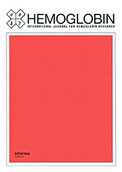Lebedev AV, Pelouch V, Ivanova MV, Levitsky DO. Hemoglobin. 2011 35(3):247–54. IF: 1.414

Abstract:
Endogenous low molecular weight redox active compounds (RACs) comprise antioxidants, pro-oxidants, transition metal cations and metal chelators. Traditional electrochemical methods of measuring RACs are limited to aqueous solutions, thus providing information of only hydrophilic RAC pools. In a large number of diseases associated with oxidative stress and/or with metal toxicity, redox states of hydrophilic as well as hydrophobic compartments are modified, and therefore development of methods for their detection is both necessary and important. The pools of lipid soluble RACs in reduced and oxidized forms in n-hexane extracts obtained from blood plasma, erythrocytes and whole blood of healthy donors were determined by spectrophotometric detection of the 1,1-diphenyl-2-picrylhydrazyl (DPPH) free radicals, which stoichiometrically interacts with hydrogen donors in non polar solutions. Measurements of RACs in extracts before and after treatment with NaBH(4) provided information about the levels of both reduced and oxidized RACs. Vitamin E was also determined using a fluorescence method. The results have shown that vitamin E is the major RAC in blood plasma lipids but not in blood cell lipids, where other phenols and quinones appear to predominate.
-mk-
